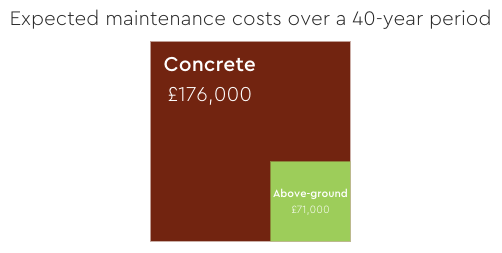Traditionally, swimming pools have been built in-ground. This is done by excavating the site and filling
the hole with reinforced concrete, which is later waterproofed (usually with a resin-based render) and then tiled.
In recent years, however, above-ground pools have become more common. This is due to the significant savings made on time, cost and environmental impact compared to a traditional in-ground, concrete pool.
Environmental impact
Above all else, building an above-ground swimming pool leads to a significantly lower carbon footprint and saves hundreds of tons of materials compared to an in-ground pool.
Building a 25m, above-ground pool sees a 50 per cent reduction in CO2 emissions compared to its in-ground counterpart. And for choosing to build above ground, you’d save at least 285 tonnes of material.

Construction time
Since less materials are being used and limited groundwork is required, construction of a permanent, above-ground pool can be completed quicker than a traditional, concrete pool.

Many of ReCreation’s swimming facilities have been constructed in less than 12 months, with the average build time of 14 months being at least 20 per cent quicker than an in-ground build.
Life span
Above-ground swimming pools are designed to last the life of a building when maintained correctly. Ease of maintenance means repairs can be made without large-scale, structural changes. That means an above-ground pool would last at least 50 years as long as the building itself is kept running and is well managed.
In comparison, an in-ground, concrete pool has a lifespan of up to 50 years, although expensive maintenance work would likely be required to get it to – and beyond – that age.
ReCreation’s above-ground swimming pools come with a 15-year structural guarantee, compared to a typically 10-year structural guarantee for an in-ground pool.


Maintenance
Due to the stainless steel structure of an above-ground pool, maintenance is predictable and a fraction of the cost of what it would take to repair an in-ground pool.

Unexpected leaks in an above-ground pool can only occur at the panel joints, which means water loss would be minimal, easily found and repaired quickly without draining the pool.
